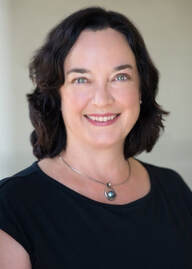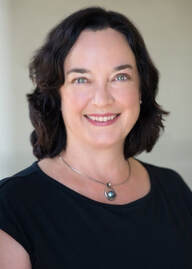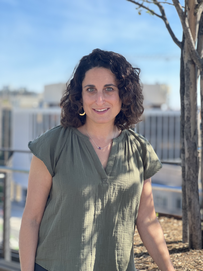In some ways, the business model is straightforward in schools, with a single major driver of revenue: tuition. In 2019-2020, tuition accounted for 75% of revenue in independent schools. (The remaining 25% comes from sources such as fundraising, endowment draw funds, and auxiliary programming). When you look at these numbers, it’s clear that the only way to substantially increase revenues has to do with tuition, whether that’s raising the cost for enrollment, or increasing the number of enrolled students. Both options, however, come with limits—as schools increase the cost of tuition, the number of families that are able to pay dwindles. Students, as well, are a finite resource, with U.S. birth rates dropping steadily for over thirty years.
Schools also have an overwhelming primary expense: salary and benefits for faculty and staff. 64% of schools’ expenses were dedicated to faculty and staff costs. (No other expense category comes close, with maintenance and instructional costs each comprising less than 8%.) Again, because this one sector of the budget is so overwhelming, it’s hard to impact overall spending without addressing this expense. At the same time, no one wants to minimize expenses by laying colleagues off, cutting benefits, or slashing salaries. With increasing inflation and cost of living, even keeping salaries and benefits flat can feel like a cut in take-home pay. From a pedagogical perspective, a classroom is a microcosm of a school. From the financial perspective, however, there’s almost no common ground between the budget of a single classroom and the budget of the institution. Far too many schools aren’t explicit about this disjunction, and that makes it easy for educators to misunderstand financial operations. All too often, that misunderstanding can sow distrust of administrators who need to make decisions based on financial realities. Breaking down the misconceptions about school finances can help Academic Leaders communicate the reasons behind budget-driven decisions. It’s time for every educator to understand how schools operate beyond the walls of the classroom.
0 Comments
This Thanksgiving, with the world seemingly changing faster than ever before -- a still raging pandemic, political tumult, more climate catastrophes, continued racial reckonings, and more-- let’s be thankful that schools have been a refuge for children. Schools have created spaces for their students to feel and be safe, surrounded by educators that care for their physical, emotional, and intellectual well-being. The impact of educators over the past twenty-one months will be felt by a generation of children, and the world will be better because of you. I hope that you have a wonderful, relaxing, and safe holiday weekend, filled with gratitude and grace for others and for yourself. I’ve asked my team to share what they are thankful for, as well. -Brad  “I am thankful for the joy, laughter, and challenges that come with having a three-year-old son, a job that pushes me to grow both professionally and personally, and a support system that makes it possible to manage anything that comes my way.” - Curt Brossman, Controller  “One of the things I love about my work at One Schoolhouse is that with more than 250 schools in our consortium, we have a birds-eye view of what's happening nationally in independent schools. This fall, that's meant that we can see that schools everywhere are dealing with mid-year faculty departures. We've been receiving two or three calls every week from schools who are hoping that online learning is the solution to unexpected staffing changes. In those conversations, I always say the same thing first: ‘You aren't alone.’ Most of us who work as administrators in independent schools are islands of one--we're the only people who do our work, and it can be difficult to see the big picture. I am grateful to have the opportunity to work with Academic Leaders to make their islands a bit bigger, to be their partner in challenge and their cheerleader in success.” - Liz Katz, Assistant Head of School for School Partnerships  “I am thankful for being present, in good health and good spirits and I am most thankful for my family, friends and community.” - Seanta Cleveland, Program Manager for Academics  “We've all lost something over the past few years -- a loved one, self-control, a job, our color blindness, a piece of childhood, our sanity. I am immeasurably grateful to have discovered that, after the grief or anger or frustration or trauma subsides, what I put into the space that remains is wide open. It is an opportunity to create a sanctuary.” - Corinne Dedini, Assistant Head of School for Teaching & Learning  “I am incredibly grateful for an abundant life. One where I enjoy tremendous health, security, stability and comfort. I am grateful to be ever-evolving in an ever-evolving world. Most of all, I am grateful for human connection and love and being surrounded and supported by kind, generous, big-hearted people.” - Amy Nyland, Director of Operations  “For teaching me that change is constant, renewal is possible, diversity is enriching, and quiet is good, I give thanks to the gifts and wisdom of nature.” - Meera Shah, Director of Studies  “I'm grateful for everyone who is fighting to defend the truth and for teachers’ and students' right to read and discuss great books in the face of attempted oppression.” - Sarah Hanawald, Assistant Head of School for PD & New Programs  “I am wildly thankful to work with the people I do- staff and teachers. I feel like I have a dream job because I enjoy my colleagues so much. I am also thankful for good health, something I probably will never take for granted after this pandemic.” - Lynnae Boudreau, Instructional Designer & Mathematics Teacher  “I am grateful for the unexpected and unpredictable --- both remind me there is still so much to enjoy in this life. Be open and curious!” - Tracie Yorke, Instructional Designer for Equity, Inclusive Innovation, and Accessibility  “I'm grateful for the warm welcome to the team that I've received, for the life-changing opportunities this year has brought me, and for the various communities I've been lucky enough to join. I'm grateful for my local used bookstore and for the coffee shop around the corner. And most of all, I'm grateful for the unwavering love and support of loved ones, near and far, old and new, who have become or remained part of my life this year.” - Sienna Brancato, Program Manager for PD & New Programs  “I am thankful for my team members who bring various perspectives to the discussion and thoughtfully navigate topics and challenges. I'm also very thankful for my family's health!” - Beta Eaton, Director of Student Support  “I am thankful for the communities I am a part of. My bonds with classmates, colleagues, family and friends allow me to walk through life securely.” - Elliot Svirnovskiy, Communications & Marketing Intern  “I am thankful for the commitment of educators to each of their students, the connections I have with my colleagues, the guidance from mentors that encourage my growth, and the caring support from my family and friends.” - Jasper McElrath, Communications & Marketing Manager  Sarah Hanawald Sarah Hanawald In a recent Pulse Post, we asked a question that we also ask in our Leadership for Advanced Independent Curriculum: how do you assess your academic program? All too frequently, one of the top answers is, “By the college list.” This answer always dismays me, so I ran it by someone who I knew had expertise on the matter: Sonia Bell, the Director of College Counseling at St. Luke’s School (CT). I recently had the chance to talk with Sonia and ask her some questions about what academic leaders can learn from college counselors. I was surprised to hear that one of her first insights was something we’ve been talking about here at One Schoolhouse for many years--the importance of a personalized experience. Sonia went on to explain that one of the roles of a college counselor is to learn all about a student, not just their academic performance in a specific course, but their interests, needs, and the quirky “extras” that help a counselor support the student and their family in finding a right fit college. How does college counseling resemble personalized learning? Most schools have outcomes that are institutionally defined--in the college process, it’s typically finding a good-fit college-placement for each graduate. The experience of achieving that objective is personalized, with a path that is unique for each student, due to the professional expertise of an educator. While independent schools excel at knowing students and building transformative learning relationships with them, every family-school relationship does not require the same attention as that built between families and college counselors and that is okay. When all is going well, it is natural that parents and guardians do not feel the need for several hour-long one-on-one conversations with a school leader. This makes the information gathered during the college counseling process a resource that may get overlooked. Leaving all that insight unexplored would be a mistake. There’s no need for academic leaders to replicate the same conversations that college counselors are having with families. However, if Academic Leaders schedule regular, structured, conversations with college counselors, they can gain insights about the student experience at school that can inform curricular and pedagogical decisions. For example, Sonia’s knowledge of how to educate parents was essential when St. Luke’s moved beyond a standardized curriculum for its advanced courses. Without a healthy professional relationship, knowledge can be locked in institutional silos. Academic Leaders--your college counselors have information you can use in your work to ensure that the student experience is mission-aligned. Schedule time with college counselors periodically to debrief these valuable fonts of information and make sure that information doesn’t stay locked away.  Sarah Hanawald Sarah Hanawald Students have never arrived at school with exactly the same capacities and experiences. The expectation that they should, that every child should measure up to an external definition of preparedness, has always been inherently inequitable. The COVID-19 pandemic in particular has laid bare the flaws with this idea of “readiness.” Last week, I attended a webinar offered by The Hunt Institute, a nonprofit focused on improving educational policy and leadership. A panel that included a college president, a state university system director and two non-profit leaders shared insights about the challenges college students were facing, and how college leaders could support students struggling after disruptions to their educational experience caused by the pandemic. One of the panelists, Dr. Yolanda Watson Spiva, president of Complete College America, challenged the prevailing narrative that students must be “college-ready.” That approach, she argued, “normalizes” institutional inequities. Instead, institutions of higher education need to be “student-ready,” having systems in place to support students in graduating by meeting them where they are. K-12 school leaders should consider shifting from a “school-readiness” mindset—an exclusionary concept rooted in privilege—to a “student-readiness” approach. Most Academic Leaders are at least familiar with the principles of Universal Design for Learning (UDL), a framework for “to improve and optimize teaching and learning for all people based on scientific insights into how humans learn.” K-12 educators have long recognized the need to understand where students are, rather than just teaching to the place we think they should be in. Now, more than ever, Academic Leaders should take Dr. Spiva’s advice. You can’t meet students where they are if you don’t know where to find them. This year, students and families are in vastly different places academically and emotionally, and this has begun to show in the national landscape and our classrooms: fraying tempers, teacher exhaustion, overwhelming grief, and general strife are all in the news and on social media. Some families contended with unemployment, food insecurity, illness, death, and grief; others were able to navigate with minimal effect on income or health. We do know some general trends; our Black and Hispanic students are more likely to have lost close family members to COVID-19. Precarity only increased for students with families in tenuous financial situations. In order to be student ready, school leaders will need to be continuously attuned and responsive to students’ needs. Leaders’ attentiveness may require relying on the relationships Academic Leaders have with other campus leaders, including the business office, financial aid, student support, DEIB leadership, school counselors, and even athletics coaches and arts directors. The individuals in each of these roles are poised to understand students’ needs in unique ways. Being student-ready is the right thing to do for our students and our schools. As with so many other areas, the pandemic has intensified inequity that was already in place. To become communities of equity, we must both improve our systems, and seek to become more student ready every year.  Peter Gow Peter Gow Our educational institutions are under attack, with trumped up charges of infidelity to received truths and white supremacist norms forming much of the basis of the case against relevant and socially meaningful public K–12 education. At the same time, the elitist past and occasional arrogance of independent schools has provided much grist for journalists, and the expression of legitimate concerns about the experiences of minoritized students have added to the disparagement these schools have experienced in public discourse in recent years. The size of some private university endowments and some of their own histories of disengagement from the “real world” have attracted the attention of politicians and others keen to punish these schools for, it seems, their very existence. First, let’s review some facts. The system of taxation in the United States favors the existence of the “non-profit” sector, in all its manifestations, by providing certain kinds of direct tax relief to such organizations and institutions and of course by relieving donors of the burden of paying taxes on their donations. On top of this, states and the federal government generally impose only the lightest of regulation—aside from obvious issues around health, safety, and prudent and ethical financial and human relations management—on independent schools. (For some light reading, check out this compendium of such state regulations as compiled by the U.S. Department of Education.) Independent schools, in other words, live a privileged existence, going about their business free from much government “control” and generally living outside the economy comprised of other businesses of about their size and scale. Whence this privilege? The legal history is long and beyond my expertise, but it was largely born from the early existence of institutions that we now think of as “non-profit”—colleges, hospitals, charities, “private” schools—as entities with religious affiliations. Even in the quasi-theocracies of colonial times, keeping the management of such institutions away from governmental interference was regarded as essential. It is a simple conceptual and practical journey from the Revolution that liberated the American colonies from the control of the British monarchy to the First Amendment and the enshrinement of the legal and social principle of “separation of church and state.” Keep your taxes and rules away from our institutions of social benefit. Well, independent schools, what is the social benefit you are providing in 2021? And what evidence do you have of both your good intentions and the successes of your endeavors as benefactors of the commonweal? Because right now, the need has never been greater for the idealism, the high-mindedness, and the ambition to do the right thing that independent schools express in their public statements of mission, values, and priorities. As the grip of anti-progressive social and political forces threatens to tighten on and constrain our public educational institutions in their own quest to serve the national public good, independent schools can and must now step up to demonstrate the power of truth and justice in shaping the lives of children and young adults everywhere. Practically, this moment can be regarded as an opportunity for independent schools to plant their own flags in the ground, to provide educational experiences based on their ideals and repudiating even more explicitly some aspects of their pasts and even their more recent “brands” and public identities. But it’s more than an opportunity, people. It’s an obligation. For centuries independent schools have aggregated and arguably arrogated to themselves privileges that have proceeded from an implied historical duty to be institutions of social benefit. It is not difficult to see these privileges as endangered in this moment, and only by living up to them with integrity, vigor, and collaborative and cooperative effort can our institutions make a compelling case to society that their privileges and perhaps their very existence are worthy—by virtue of the demonstrable value they provide to society as a whole and not just to their “customers” and closed communities. Independent schools, start right now to live up to your best values and understand your roles as keepers of a flame that a growing element of our society would like to see snuffed out. Now is the moment, and it may not come again. |
Don't miss our weekly blog posts by joining our newsletter mailing list below:AuthorsBrad Rathgeber (he/him/his) Archives
July 2024
Categories |


 RSS Feed
RSS Feed